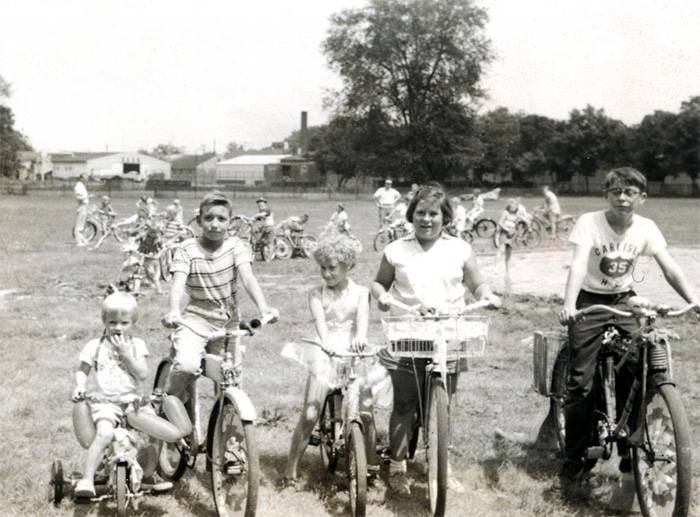The Hidden Histories of Public Spaces

LeTort Park. Photo courtesy of Carlisle Historical Society.
Student research project delves into histories of Carlisle parks
by MaryAlice Bitts-Jackson
There are 18 public green spaces within cycling distance from campus. What secrets and social histories do they hold? Recently, 20 students began to answer that intriguing question when they launched a website about four of Carlisle’s public parks.
The students are enrolled in History 211: American Landscapes, taught by Visiting Assistant Professor of History Greg Kaliss. After visiting LeTort and Thornwald parks on Carlisle’s south side and Heberlig-Palmer and Memorial on the north, the class dug in to materials at the Cumberland County Historical Society and at the Borough of Carlisle’s Parks and Recreation Office, supplementing their work with online and on-campus resources and interviews.
It was a challenge; most students had little to no experience working with original source materials, and archives have limited hours of operation. But, as they combed through land plans, deeds and property transfers, old photos, letters, contracts and clippings, they began to piece together biographies of each site.
Mansion, junkyard and burial ground
LeTort Park, the students soon learned, was originally owned by a local couple, and then the Kiwanis Club, before it became town property. Built around a section of one of the nation's finest fly-fishing streams, the park includes a baseball field, picnic area and a playground designed with input from local children (an original survey was a key find).
Students studying Thornwald Park traced its history from a grand private estate—complete with gardens, wooded areas and a nine-hole golf course—to retirement community grounds to its present use. “As time progressed the land changed shape and size, but a large bulk of it stayed natural and open,” said Edward "Ned" Emala ’17 (political science). “In large part, this is because of the wishes of borough residents. There is a real sense of attachment to preserving the land.”
Another research team uncovered a photo of a bulldozer removing tombstones in Lincoln Cemetery, a 19th-century burial ground for African Americans, now the site of Memorial Park. That made a big impression on Caly McCarthy ’17 (history, environmental studies), who noted that while the borough had maintained a nearby cemetery for white citizens, it neglected Lincoln Cemetery, leading to littering and crime. The space was declared a public nuisance and converted to a park in the early 1970s.
“This project has reinforced a theme that we've been exploring throughout the semester—that landscapes can be contested sites that demonstrate power dynamics,” McCarthy said.
Students studying Heberlig-Palmer Park faced the biggest challenge, as there are few related documents on file. They discovered that the park was once was a junkyard and is now being considered a site for neighborhood community gardens.
Presenting the work
With help from Ryan Burke, web development specialist, the students built a blog to present their findings. Launched April 26, the blog features an interactive map and information about each site’s founding, the evolution of its plans and forecasted uses. There are timelines and scans of historical documents, photos and articles.
While the blog is a work in progress, it allows visitors and community members to “connect to the Carlisle neighborhoods and see how the changing landscape of Carlisle affects the townspeople and Dickinson,” said Devlynn Chen ’17 (biology), whose group assembled a narrative of Heberlig-Palmer Park. Kaliss agreed, saying that the local parks and recreation director has expressed interest in using the site as a resource, as has a neighborhood revitalization group.
For the students, the project brought more than new research experiences and web-building skills. It also yielded a fresh way to consider familiar surroundings. “It was interesting to find out about a space that I have now lived near for almost three years,” said Emala.
“It makes me think of the park near my house at home,” said Emma Weaver '19, who worked on the LeTort research project. “I will definitely look it at differently when I go home this summer.”
Learn more
Published May 11, 2016